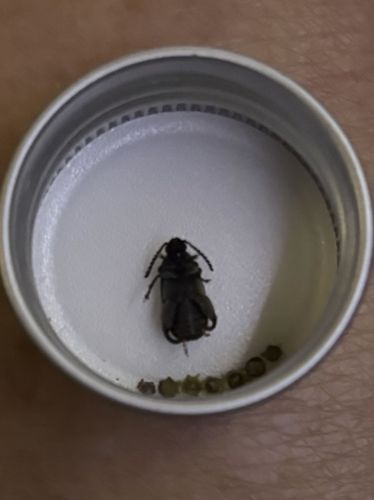Glowworm (likely female)
Scientific Name: Likely Lampyris noctiluca (Common Glowworm), but identification to species level from this image alone is difficult without clearer morphological details.
Order & Family: Order: Coleoptera, Family: Lampyridae (Fireflies/Glowworms)
Size: Adult females typically range from 10-25 mm (0.4-1.0 inches) in length, while males are generally smaller, around 8-15 mm (0.3-0.6 inches).

Natural Habitat
Damp, dark, and sheltered environments such as woodlands, hedgerows, grasslands, and gardens. They prefer areas with good ground cover and often near their prey (snails and slugs).
Diet & Feeding
Larvae of glowworms are predatory, feeding primarily on snails and slugs. Adult glowworms (especially females) are typically non-feeding or feed minimally.
Behavior Patterns
Adult female glowworms are typically flightless and remain on the ground to emit light to attract males. Males are winged and fly in search of females. Larvae are predatory and molt several times before pupating. The luminous organs of glowworms are used for mate attraction. The eggs seen in the image are likely laid by the female glowworm.
Risks & Benefits
Glowworms are beneficial insects as their larvae help control populations of slugs and snails, which can be garden pests. They pose no direct risks to humans. Their presence can be an indicator of a healthy ecosystem.
Identified on: 8/16/2025